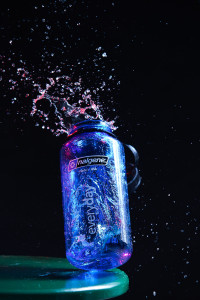But the Nalgene originally had a much more narrow focus. It was a laboratory container, one of many developed and sold by the Nalge Company of Rochester, New York.
According to the company website,[2] stories eventually began circulating of scientists using these containers outside of the lab. They were taking them on hikes. They were taking them camping. They were finding all sorts of novel uses for these bottles. But it was the Boy Scouts that caused Nalge to truly embrace these unofficial uses. Company president Marsh Hyman learned that his own son and other Scouts were taking Nalgene containers on their trips. Realizing that this was a golden business opportunity, Hyman tasked his Speciality Department with targeting the outdoors market. Our backpacks have never been the same.
Engineers and designers solve problems. Nalgene bottles are well crafted products that met the specific requirements of their original customers. Yet the need for durable, reliable containers is not unique to laboratories and those bottles were quickly repurposed for other tasks. We should always remember that, while we are solving our own problems, we may be solving others’ problems also.
Notes
- You will find ample YouTube evidence of people abusing their Nalgenes to demonstrate their durability. In this video they throw it off a roof, drive over it with a truck, fill it with boiling water, and then shoot it with a pistol. It doesn’t survive the pistol, but fairs well with everything else.
- http://nalgene.com/history/

